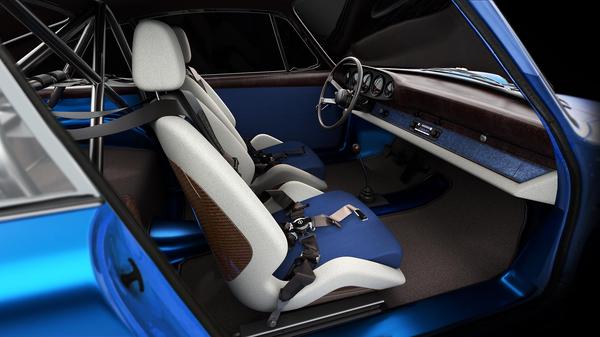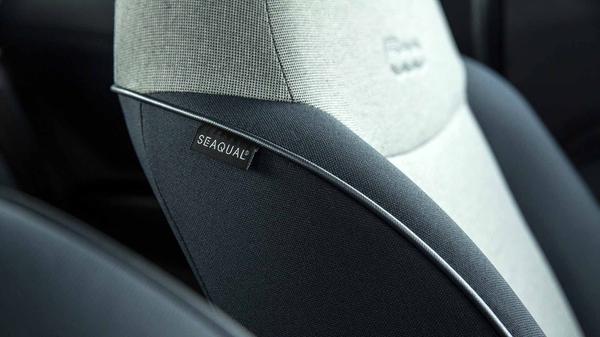News
Sustainability Newsletter – February 2023
Our regular sustainability round-up continues with a look at some new recycled materials this month, all of which could be in your car soon


Words by: Erin Baker
Published on 13 February 2023 | 0 min read
Coffee, eggs, walnuts, rice and lentils are all on the table as sustainable, re-used materials to replace plastics or leather inside cars. This comes according to CALLUM, the design and engineering consultancy founded by Ian Callum, former Jaguar and Aston Martin designer and all-round nice guy into the bargain.
The consultancy partnered with Ottan, a green-tech business, to explore food, clothing and plastic waste for inspiration and for sourcing useable raw ingredients for the cars of our future. Using a Porsche 911 interior as the test bed for exploring new materials from the thousands of tonnes of food thrown away each year, Callum’s team identified coffee pulp, eggshells, walnut shells, red lentils and rice as viable materials for cars on the road in 2030. It’s not as easy as it might appear to come up with viable substitutes for the materials currently used by manufacturers, either. Surfaces inside cars must be hard-wearing, flame-resistant and immune to both high and low temperatures. They must also be capable of having glossy or matt surfaces and being opaque or translucent, so that they can be use everywhere that plastic currently exists, from dashboards to backlit switches that illuminate so you can use them at night.
The consultancy partnered with Ottan, a green-tech business, to explore food, clothing and plastic waste for inspiration and for sourcing useable raw ingredients for the cars of our future. Using a Porsche 911 interior as the test bed for exploring new materials from the thousands of tonnes of food thrown away each year, Callum’s team identified coffee pulp, eggshells, walnut shells, red lentils and rice as viable materials for cars on the road in 2030. It’s not as easy as it might appear to come up with viable substitutes for the materials currently used by manufacturers, either. Surfaces inside cars must be hard-wearing, flame-resistant and immune to both high and low temperatures. They must also be capable of having glossy or matt surfaces and being opaque or translucent, so that they can be use everywhere that plastic currently exists, from dashboards to backlit switches that illuminate so you can use them at night.

Clothing waste is another abundant source of alternatives for seat fabrics. Charlotte Jones, CALLUM’s head of materials and sustainability, has pointed out the viability of working with suppliers like Planq, which takes jeans then shreds and presses them with corn or potato starch to create a hard veneer for the shells of seats or dashboards. “There is another way,” she says, “and we can support manufacturers and suppliers to identify engineered alternatives that end consumers are increasingly looking for.”
Marine plastic waste, such as polyester and the recycled PET plastic from discarded drinks bottles, have already been used by brands such as Fiat in its 500e electric supermini. CALLUM has used fabrics made from the marine plastics in the car seats of the 911 study car, with no weight difference over normal fabrics. Crucially, the material can be recycled again, as well. Jones also advocates Econyl, a material that uses nylon carpets or fishing nets to create a new hard-wearing fabric, for car carpets. In terms of adding colour, CALLUM and his team experimented with purple carrot pulp and tree leaves for different hues. While the 911 project’s interior is a design study for cars post 2030, CALLUM says the materials it has explored are all capable of meeting the quality control needed for mass production. “More of our customers are starting to think about sustainable projects and put an emphasis on the circular economy,” says Ian Callum. “With others, we might nudge them down that path, highlighting the business benefits of making a more sustainable choice”. Here’s to the nudging.
Marine plastic waste, such as polyester and the recycled PET plastic from discarded drinks bottles, have already been used by brands such as Fiat in its 500e electric supermini. CALLUM has used fabrics made from the marine plastics in the car seats of the 911 study car, with no weight difference over normal fabrics. Crucially, the material can be recycled again, as well. Jones also advocates Econyl, a material that uses nylon carpets or fishing nets to create a new hard-wearing fabric, for car carpets. In terms of adding colour, CALLUM and his team experimented with purple carrot pulp and tree leaves for different hues. While the 911 project’s interior is a design study for cars post 2030, CALLUM says the materials it has explored are all capable of meeting the quality control needed for mass production. “More of our customers are starting to think about sustainable projects and put an emphasis on the circular economy,” says Ian Callum. “With others, we might nudge them down that path, highlighting the business benefits of making a more sustainable choice”. Here’s to the nudging.
